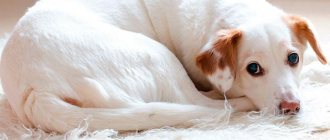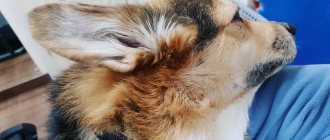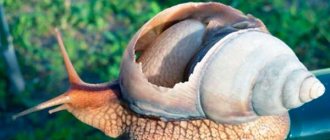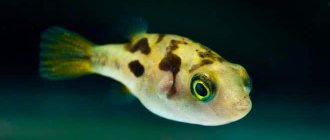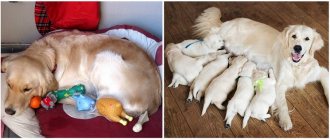The truth is that the color of dog stool gives us a lot of information about the health of the dog. Like the presence of green diarrhea in dogs. This is usually one of the first symptoms that something has happened to our dog. Among the types of diarrhea in dogs, green diarrhea in puppies or adult dogs can be one of the most dangerous health conditions for your pet.
Although it may seem strange to you, the truth is that checking your dog's feces is one of the daily tasks that every owner should do. The color, consistency, frequency, quantity or any change in our dog's stool can alert us to possible pathology or changes in his body.
Causes
Here are some common reasons why your dog has green diarrhea:
- water,
- fiber from food digestion,
- fecal bacteria,
- cells and intestinal mucus,
- pigments: usually bilirubin. This pigment has the function of promoting fat digestion. As you may already know, bile is green. But naturally, thanks to the action of enzymes in the intestines, it becomes a brown pigment, which gives the stool its characteristic color.
Other pigments that may appear naturally in your dog's feces include: lycopene, betanin, oleoresin, bixin, curcumin, or chlorophyll .
© shutterstock
Therefore, if your dog has green diarrhea. It is very likely that she ate foods high in green pigments. We're mainly talking about pigments like chlorophyll from plants, since your dog may have been consuming grass excessively.
Or other similar pigments in fruits and vegetables. How fashionable they have become thanks to Barfi diets. Therefore, if this is the reason, just stop eating this food for a few days and the stool will turn into a normal color. Although in any case, if you know that this is the cause of green diarrhea, you should not worry.
Causes of green stool
The color of feces is given by pigments that are formed during the destruction of hemoglobin. Coloring substances enter the intestines from bile. The pigment bilirubin gives stool a brown color. When the formation of feces is disrupted, they liquefy, bilirubin is oxidized and converted into green biliverdin under the influence of putrefactive microflora.
The development of pathogenic bacteria and fungi is prevented by beneficial microbes of the large intestine, which die in the following situations:
- Viral infections.
- Parasitic diseases.
- Food poisoning.
- Dysbacteriosis.
- Diseases of the pancreas and liver.
Infections
A characteristic symptom of canine distemper is green stool. The pet has diarrhea and the feces are dark green in color. Diarrhea is accompanied by vomiting, dehydration, and weight loss. The dog does not eat anything, the fur is disheveled, and seizures develop. Green diarrhea is also characteristic of coronavirus infection. But the disease is not as dangerous as the plague.
The disease mainly affects unvaccinated puppies. It is dangerous to self-medicate. Antiviral serum can cause an allergic response, so treatment of the acute phase is left to specialists. If you find these signs, immediately take your pet to the clinic or call a veterinarian at home.
Specialists use antiviral drugs, immunomodulators, antibiotics, cardiac drugs, and eliminate signs of dehydration. An adult dog can also get sick. If she is vaccinated, the disease is mild and responds well to treatment.
Rehabilitation measures will be carried out by you. The dog needs to be taught to eat again. Natural food is excluded from the diet. For the first 24 hours, wet canned food or soaked dry granules are fed according to the instructions on the back of the package.
I recommend feeding pets who have recovered from an infectious disease with therapeutic food - Hill's i/d, Royal Canin Gastro Intestinal, Eukanuba Intestinal. No need to add vitamins, everything is included. Prebiotics were introduced into the feed mixtures - nutrients to restore the microflora of the large intestine. Beneficial bacteria secrete lactic acid, which inhibits putrefactive microbes.
Hills Digestive Care i/d
Bacterial infections affect young animals in shelter or nursery conditions when they are fed raw meat products contaminated with pathogenic microflora. If you are a breeder or the manager of a dog shelter, call a veterinarian, and from now on monitor the quality of food and living conditions.
Parasitic diseases
Green feces appear only when there is a high degree of intestinal infestation. When affected by protozoa, the color of the stool is different. Helminths block the absorption of vitamins and other nutrients, which weakens the immune system. Worms injure the mucous membrane and make it vulnerable to microbes living in the intestines. Putrefactive bacteria oxidize bilirubin, converting it into green biliverdin.
Examine the feces carefully; you will find parasites in them. Involve veterinarians in deworming. Even if you strictly follow the instructions, the possibility of poisoning by decay products of dying parasites cannot be ruled out. Therefore, you cannot do without detoxification therapy.
To prevent worms from multiplying in your dog, do not wait for them to be detected in the feces, but carry out quarterly preventive deworming.
You definitely need to know how often to worm your dog and which anthelmintic drugs are most effective.
Food poisoning
They develop when fed natural food. We cooked porridge, filled the pan and went to work. The food turned sour, the hungry dog ate it and started having diarrhea. One Great Dane owner boasted about his pet. In the utility room of the high-rise building, equipped as a dog’s home, there was a pot of borscht, in which a loaf of bread was floating.
Your pet could eat some human food and it would be bad for him. At the veterinarian's office, a female Rottweiler stole a kilogram of butter from the table. It was with great difficulty that the animal was saved. The dog owner purchased cheap offal. The dog didn’t eat everything at once, and the food didn’t fit in the refrigerator. The result is green diarrhea.
I appeal to the conscience of natural food followers: do not skimp on pets, do not feed products of dubious quality, feed the dog twice a day, throw away leftover food.
If you want to help your pet, do not give antibiotics or other antimicrobial agents. You may make the situation worse. And you can use probiotics. These are live lactic acid bacteria that colonize the intestines. Beneficial microflora secretes organic acids that inhibit the development of putrefactive bacteria. The drugs Vetom, Bifidumbacterin, Fortiflora are in demand. Medicines will not cause harm either.
Poisoning also occurs when feeding seemingly benign, ready-made food. If the seller stores food in a damp room and allows significant temperature changes, the granules become damp. Conditions are created for the proliferation of fungi that produce mycotoxins.
Packages of granulated food are equipped with Zip-Lock closures.
When exposed to air, oxidation of vitamins and fats occurs. Insects love food pellets. Therefore, after selecting the required number of croquettes, close the lock. Use opened packages in 30-40 days or less. If you purchased a large bag, then pour its contents into a special container for storing dry food.
Pathological causes of green diarrhea
Unlike the previous case, the presence of green stool is not a cause for concern. When we talk about green diarrhea, the problem starts to get complicated. Because undoubtedly, after this type of diarrhea, there is a pathological problem that we must solve with the help of our veterinarian. Causes of this green diarrhea in dogs :
- Stressful situations : for example, from moving, firecrackers or fireworks. Our dog responds by increasing intestinal motility. This increased bowel movement causes stool to pass in a very short time. So, green bilirubin, which is naturally found in stool, does not have enough time to be metabolized.
- Intestinal infections : the same as in the previous case. Certain intestinal infections, both viral, bacterial and parasitic. They arise not only when the intestinal mucosa changes and further dysbiosis. They are also associated with an increase in the rate of intestinal transit. In this case, as with stress, bilirubin does not have time to be metabolized, and is ultimately released along with feces. Retaining the characteristic green color.
Intestinal infections that are most often associated with green diarrhea in dogs:
- Salmonellosis . Especially the species Salmonella enteritidis and typhimurium, which, in addition to their usual symptoms: fever, abdominal pain, dehydration, etc. They are also manifested by the presence of green diarrhea.
- Giardiasis . This disease is caused by the parasite Giardia, also known as Lamblia Intestinalis or Duodenalis. These are parasitic protozoans that should be eradicated as quickly as possible. Because they reproduce very easily. And when they spread, they are more difficult to treat. This parasite is found in standing water and in the feces of other dogs.
Therefore, as you can imagine, the infection is very easy, especially due to the dogs' habit of sniffing each other.
Giardiasis is a disease that can be fatal and which, in addition to causing green diarrhea in dogs that is very runny and smelly, is also easily identified by the following symptoms:
- Abdominal pain.
- Aerophagia or excess flatulence.
- Weight loss.
- Sometimes diarrhea may also be red due to the presence of blood.
To give you an idea of the damage that lamblia causes, it is enough to say that it feeds directly on the cells that make up the intestinal wall. This causes not only abdominal pain, but increased intestinal motility, which naturally tries to eliminate the parasite.
© shutterstock
This is why we insist that you contact your veterinarian as soon as possible after discovering green diarrhea, as long as it is treated promptly with metronidazole (a common and inexpensive antibiotic). Your dog will likely heal quickly and without sequelae.
puppy has mucus and blood in stool
Diarrhea in dogs: causes, symptoms, treatment methods
Dog owners are often concerned about issues related to the health of their pets. An unpleasant and alarming symptom is diarrhea in a dog - what to do in such a situation? Some owners don't pay attention to their dog's stomach upset. This behavior can end in big problems.
Diarrhea can be a manifestation of a serious illness or dangerous poisoning. To make the right decision, it is necessary to determine exactly what caused the diarrhea.
Intestinal dysfunction in a dog can sometimes be the result of dysbiosis, lack of vitamins, allergic reactions, gastric arrest, or foreign bodies entering the animal’s gastrointestinal tract.
To establish the cause, you will need to call a veterinarian at home. This is especially true if the animal is exhausted and its condition does not improve. In each individual case, it is necessary to correctly determine the reason why diarrhea appeared. Before drawing conclusions about the need for treatment, you should carefully study the symptoms of the disorder.
Pet owners should be aware of the specific symptoms of stomach upset in pets. These signs include:
Dogs begin to behave restlessly, whine, refuse to eat, and lose weight . They often start vomiting. The animal ceases to control the process of defecation.
Stool with mucus and other stool abnormalities. Causes. Treatment
To determine whether your stool is normal, it is important to know its color. If it is brown in various shades or closer to black, then the stool is normal. Otherwise, you will immediately see unusual changes that may be a reason for examination. If there is mucus in the stool, you should consult a doctor to determine the cause of the mucus.
Source
What does green dog stool mean?
When problems begin with your pet’s health, it doesn’t take long to panic. However, at such moments it is very important to pull yourself together, analyze the situation and not delay a visit to the veterinarian. Especially if the pet’s symptom raises serious concerns.
We recommend reading: Behavior of the Jungle Cat
Ideally, a healthy pet's stool has a rich brown color, which is due to the color of secretions and enzymes that process the stool while it is still in the gastrointestinal tract. The liver neutralizes substances harmful to the body and produces bile acids necessary for the breakdown of fat. At the same time, a large amount of unprocessed fat often causes diarrhea.
The feces of a healthy dog are well-formed, have no visible inclusions, do not stain the animal’s fur, are smooth and have a moist sheen, are of small volume and have a moderate odor. Defecation occurs approximately 1-3 times a day.
A liquid, greenish-brown or brown puddle of feces in combination with vomiting is observed at the very beginning of deadly viral diseases of the gastrointestinal tract.
Dry food (if it is premium and super premium food), which does not seem appetizing to humans, is a guarantee that the dog’s health will not be at risk. After all, in high-quality food everything is balanced, which is an excellent alternative when the owner feeds the dog unbalanced natural food.
Green stool in a dog usually comes from bile, so problems are possible in the bile ducts and the gallbladder itself. Some foods can also provide “greens”. Many people go to veterinary clinics with just such a problem. It is clear that low-quality food with a lot of dye will not make anyone healthy.
When a dog has green stool, a blood test is done to make a diagnosis, as well as an ultrasound (to know for sure that everything is in order with the internal organs, it is better to be on the safe side).
Source
Treatment of green diarrhea
There is no choice of treatment for this type of diarrhea. In principle, like any diarrhea, it needs to be treated with classical symptomatic treatment methods:
- A bland diet with an astringent such as rice starch,
- Eliminate salt from your diet
- Feed your dog small amounts of food several times,
- Use probiotics and prebiotics.
But these measures are of little use if we do not attack the origin of the problem, for which on the market you can find a wide arsenal of antibiotics for diarrhea in dogs, such as:
- metronidazole
- marbocil
- doxycycline
- florfenicol
But above all, remember that these molecules must be given under veterinary supervision. Never self-medicate your pet as you may mask the real source of the problem.
© shutterstock
Treatment
The treatment regimen is selected after diagnosis, since treating a single symptom without taking into account the overall picture is in most cases pointless. It is important to influence the cause, and not fight the consequences. Of the common medications that are prescribed to animals to eliminate the symptoms of diarrhea, we highlight the main ones:
- antidiarrheal medications such as Phthalazole or Loperamide;
- probiotics (if opportunistic microflora is detected in the intestines);
- enzyme preparations that help normalize the gastrointestinal tract.
Phthalazol for dogs
If green stool appears due to food poisoning, and the examination did not reveal any pathologies, the dog is prescribed enterosorbents, such as activated carbon or Polypefan. Also, dogs that have been poisoned drink Enterosgel, which envelops the walls of the stomach and promotes the rapid removal of toxins from the pet’s body.
Diet
In case of acute and debilitating attacks of diarrhea, dogs are required to be put on a starvation diet, regardless of whether the disease affects a puppy or an adult. The only difference is the time of abstinence from food - puppies are not given food for 12 hours, and adult dogs for the whole day. This condition allows you to cleanse the animal’s digestive tract more effectively, without loading it with new contents.
To completely cleanse the body after intoxication, the dog must follow a starvation diet.
Important! A fasting diet involves active fluid intake, especially with diarrhea. With loose stools, dogs lose a lot of water, which must be replenished to avoid dehydration.
Diet for putrefactive microflora
Putrefactive processes in the intestines will include longer adherence to a diet that involves excluding protein foods from the dog’s diet during recovery. Foods that are high in protein include:
- meat and fish food;
- eggs;
- offal.
Despite the benefits of meat for a dog, the pet should refuse it while the intestines are recovering.
Infectious diseases
If an animal has green stool due to infection, then its treatment involves the use of several types of medications:
- broad-spectrum antibiotics (specific drugs are prescribed by a doctor, who also gives information about the required dosage and duration of treatment;
- anti-inflammatory drugs;
- antipyretic medications.
Treatment errors
The most important mistake a dog owner can make is trying to self-medicate a sick animal. Many inexperienced owners do not consider diarrhea to be one of the symptoms of a serious illness and try to give the animal activated charcoal and other well-known remedies for poisoning.
Under no circumstances should activated charcoal be administered to a dog before consulting a veterinarian.
However, it often happens that green stool has nothing to do with poisoning, and cleansing the body with enterosorbent does not lead to improvement, but on the contrary, aggravates the painful manifestations in the dog. Therefore, any suspicious symptom, no matter how insignificant it may seem, needs diagnosis by a specialist.
You can give your dog strong tea and herbal decoctions only after these measures have been approved by your doctor. Often, pets who have survived poisoning are recommended to drink rice water, which helps restore digestion. This decoction is given four times a day.
Strong tea sometimes allows dogs to recover faster from poisoning
Cure for green diarrhea in dogs
If you are unable to contact your veterinarian. And you need to reduce diarrhea in your dogs. You can use the drug Loperamide (a drug that reduces diarrhea).
This is a rare product, so it is easy to dose and administer to dogs. Because the dose of Loperamide should not exceed 0.1 mg per kg of your animal. With Loperamide Over it's very easy because that's exactly the amount a drop of product contains.
But what if you don't have this version of loperamide on hand, since it is not registered in many countries. In this case, you can use pharmacological forms for humans, such as Fortasek, but keep in mind that each tablet contains 2 mg. So, if your dog weighs 10 kg, he should take a 1 mg dose of Loperamide, or half a Fortasec tablet.
In any case, you should inform your veterinarian about what you are feeding your dog. Because otherwise you may harm your dog if you use Loperamide for a long time. Masking the true cause of your dog's diarrhea will only make the illness worse.
Norms and pathologies
In the body of any living creature, all organs and systems are equal. It is generally accepted that the heart or brain is more important than, for example, the stomach or intestines. In fact, the digestive system feeds the entire body and when it is not in order, absolutely all organs suffer.
Normally, digestion of food begins immediately after it enters the oral cavity. Saliva softens food and partially prepares it for digestion. After swallowing, food moves down the esophagus to the stomach. The stomach consists of dense muscle tissue and is constantly contracting. The mucous membrane of the stomach is adapted to work in an acidic environment, since solid food is prepared for digestion when exposed to highly acidic secretions.
The process of digesting food begins not in the stomach, but in the intestines. In order for food to be digested normally, the dog’s intestines must be populated with friendly microflora and saturated with enzymes. Moving through the small intestine, food is processed by bile and special secretions that are produced by the mucous membranes.
The speed of digestion depends largely on the age and size of the dog. On average, a puppy needs 2-4 hours to digest a normal portion of food. During this time, food that moves through the intestines is fermented and broken down into useful substances and waste products. Beneficial substances are brought into the bloodstream through the mucous membrane, and the products from where are removed naturally.
After switching to adult food, at the age of 4 months and older, normal puppy stools are brown in color , dense in consistency and fairly high in moisture. If the dog’s fur in the area of the anus is stained with feces
The color of feces directly depends on the dog’s diet. From birth to 1 month, the diet of puppies consists only of milk, so normally the stool is yellow in color and has a soft consistency. Until 4 months of age, most of the dog’s diet consists of protein foods: dairy and meat products. Since the puppy most often eats crushed or liquid food, the consistency of the feces remains soft and plastic, but their color also darkens.
Normal color and consistency of feces is observed only after the puppy is completely switched to adult food, at the age of 4–6 months. Diarrhea may occur during this period due to the replacement of baby teeth with molars. This event is a great stress for the body and can have unexpected consequences.
Other stool colors
In addition to green, there are two more colors of feces, which are a sign of deterioration in the pet’s well-being and malfunctions of internal organs:
- white;
- yellow.
White feces
White stool is considered a bad symptom, since it indicates not only the presence of an imbalance in the animal’s body, but also its advanced stage. Normally, healthy dogs do not have white stools, so if you notice whitish bowel movements in your pet, you need to show him to a specialist as soon as possible and undergo examination.
